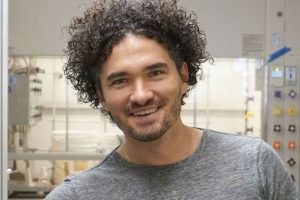
Abstract: This talk begins by addressing the key challenges and recent innovations in the field of controlled self-assembly, focusing on charged colloidal particles as model ions for constructing ionic colloidal crystals. To overcome these challenges, we utilize the
polymer-attenuated Coulombic self-assembly method (PACS). This approach employs neutral polymer spacers to fine-tune inter-particle distances and electrical double-layer interactions, facilitating the precise assembly of colloids into crystalline structures. Building on this foundation, the presentation introduces a novel system of optically transparent and fluorescently-labeled colloidal particles. With the help of confocal microscopy, we are able to visualize these ionic colloidal crystals in three dimensions. This
technological advancement not only allows for real-time structural analysis but also opens new avenues for understanding the underlying mechanisms of ionic colloidal crystallization. I’ll further discuss how the control over variables such as particle size ratios and salt concentrations leads to the formation of various crystal structures. This capability enables us to explore in great detail phenomena like crystal twinning and the occurrence of various lattice defects. In summary, the talk provides a comprehensive overview of the emerging frontiers in colloidal self-assembly, effectively bridging specialized crystallization techniques with real-time structural analysis. Acknowledgements: This work was supported by the US Army Research Office under award number W911NF-21-1-001
Bio: Stefano Sacanna graduated in Chemistry from the University of Bologna and obtained his Ph.D. (cum Laude) in Physical and Colloid Chemistry from Utrecht University in the Netherlands. In 2008 he joined the Center for Soft Matter Research at New York University as a postdoctoral fellow. In 2013 he moved to the Molecular Design Institute at NYU where he is currently a full Professor in the Department of Chemistry. His research interests include synthesis and design of colloidal model systems, self-assembly, nanostructured and active materials. He has received numerous awards and prizes including the National Science Foundation CAREER Award, the Human Frontiers Science Program Young Investigator Award, and the American Physics Society Early Career Award for Soft Matter Research.